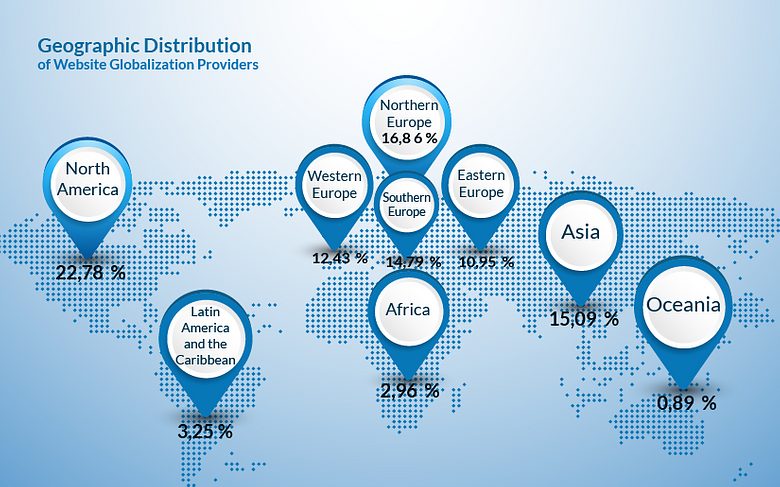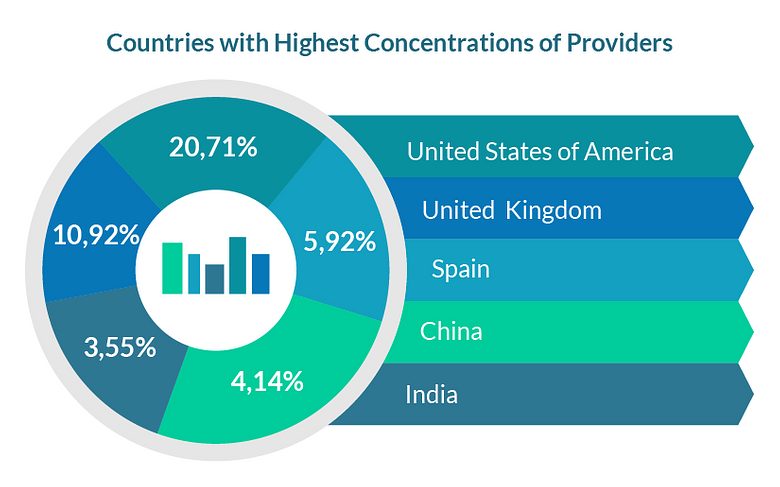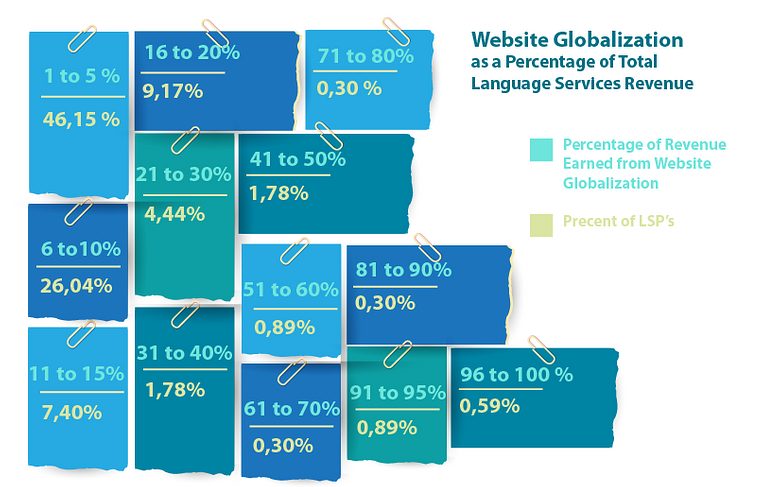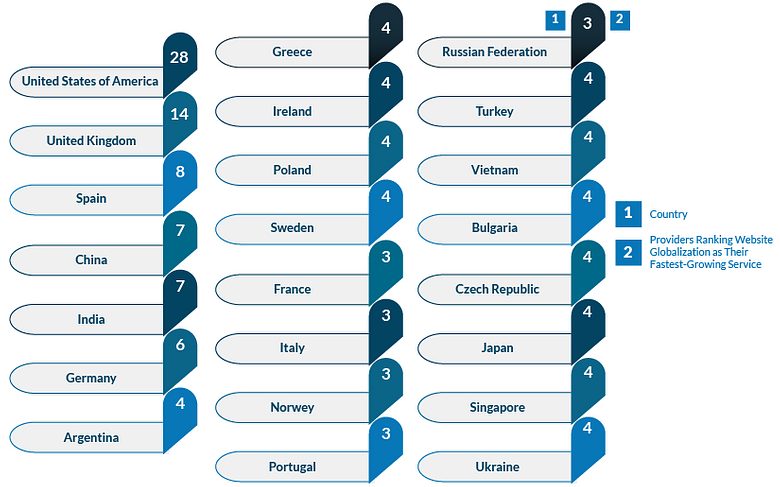
Why do 68% of translation agencies offer website globalisation?
In a recent CSA survey, 68.1% of respondents, all of which were LSPs, said they offer website globalization. So, where in the world are these providers located?
How do they manage to grow so rapidly, and what percentage of their revenue do they see from this service?
North America: a big piece of the website globalization pie
In a 2010 market-segmentation exercise, it was found that website globalization in North America is worth a massive $1,292,12 million and there are nearly a fourth of the providers found in this part of the world (22.78%). The balance of the website globalization providers can be found in:
- Northern Europe – 16.86%
- Asia – 15.09%
Eastern, Southern and Western Europe make up a significant share of the pie, too.

When we look more closely at the top five countries in terms of website globalization suppliers, the breakdown looks like this:

- United States – 20.71%
- United Kingdom – 10.65%
- Spain – 5.92%
- China – 4.14%
- India – 3.55%
Website globalization doesn’t bring in enough revenue for LSPs

The majority of respondents in the CSA’s sample reported that less than 10% of their overall revenue came from website globalization. However, companies from the United Kingdom and United States claim that this service is the most rapidly growing offering.
What are some pitfalls of website globalization?
Compared to other forms of localization, website globalization is usually shoved into the category of medium-sized projects. However, if your buyers limit their service requirements to straightforward translation of HTML files or even XML strips, the projects can indeed be tiny. By offering a full website globalization service, you can add steps like multimedia files or graphics localization and even visual localization of elements such as widgets, forms and dialogs.
You can also add QA steps, for example a live QA when updated or new pages appear on a live web server. The pitfall here is that additional services require special resources on a team who have a good understanding of web publishing tools and the process of multimedia and software localization. The LSP that tries to offer website localization services without the right staff on board could damage their reputation.
The downfall for buyers is the risk of setting up a once-off job, and not accounting for ongoing changes that web content always requires. Buyers must consider content maintenance in the long-run and during their site development planning stages.
Is there a market for website localization?

Look at the table above and you will note there is indeed a market for this service. For LSPs, the key to dealing with buyers who are new to website localization is education. Put forward efficient methods for dealing with updates on a weekly, biweekly or monthly basis, and build these into your contracts with buyers.
You’ll find that buyers may prefer to sign up for a fixed-cost maintenance plan which makes it easier for buyers to budget and for LSPs to appropriately plan their resources. With a solid process management in place and the right tools for ongoing website localization maintenance as well as strong account management skills, LSPs can turn these projects into recurring and reliable revenue streams.
Subscribe for more
Stay up to date with the latest articles, news and translation insights


